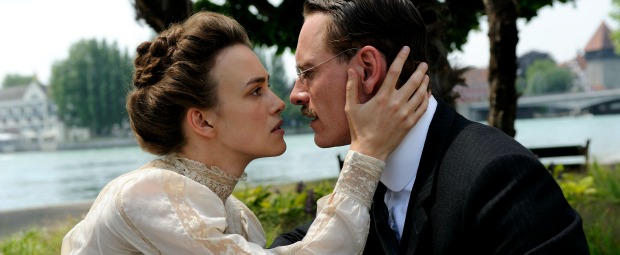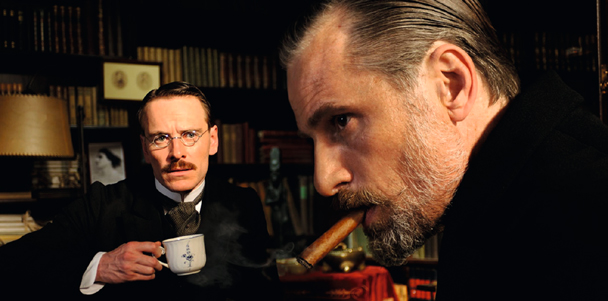A Dangerous Method
Normally with Cronenberg we're deep into psychosis, subjectively, down in the dirty of our subconscious and nightmares. Here we're in therapy.
Plot summary
Carl Jung, a disciple of Sigmund Freud, is using Freudian techniques to treat Russian-Jewish psychiatric patient Sabina Spielrein. But the deeper Jung's relationship with Spielrein grows, the further the burgeoning psychiatrist and his highly respected mentor drift apart.

On the eve of the century, before all hell breaks loose, a new model of the mind is coalescing in Vienna. It is the early days of psychoanalysis, when the science was inchoate, not yet fully formed, and a struggle is taking place—like in all nascent movements, from newly minted republics to artistic upheavals—to determine the face of it, to decide the politics of a new force that will change the world. ‘Do you think they know we’re on the way,’ Sigmund Freud says here, ‘bringing plagues?’
A Dangerous Method centres on an idealistic and impressionable Carl Jung (Michael Fassbender), and he is just getting a sense of himself. He is easily influenced by the eminence of Freud, easily knocked off track by the irrepressible (which, psychoanalytically speaking, is not necessarily a good thing) psychotherapist Otto Gross (Vincent Cassel). Jung begins to buckle under prescribed methodologies of the two men (disapproving superego and lascivious id, respectively) and has an inkling that there may be another way, a science that will help people find a way out of mental illness, not just label it. He is also under the influence of Sabina Spielrein (Keira Knightly) a masochist and possibly nymphomaniac who arrives gnashing and gurning at his clinic in Switzerland, who he treats, has unlawful carnal knowledge of, and sets on her way to becoming a leading psychoanalyst in her own right. Freud’s words are, he says, ‘carved in my heart: Whatever you do, give up any idea of trying to cure them.’
The fissure and split of Jung and Freud—the former exasperated by the latter’s insistence on all neuroses stemming from sex on the brain, the latter impatient with the former’s ‘parapsychology and superstition’ and ‘self-aggrandizing shamanism’—plays in tandem with Jung’s troubled relationship with Sabina, and his overriding bourgeois guilt (and financial dependence on his wife). As Fassbender describes the characters, we’re seeing behind the iconic facades, seeing the ‘human beings with egos and the evident flaws under the archetypes.’ And he is excellent as Jung, stalwart and earnest. Keira Knightly is also very good, brave and uninhibited as she writhes her way through madness, and Viggo Mortensen is superb and contagiously having fun as Freud, mining the easy confidence and humour.

The screenplay by Christopher Hampton is elegant, and, as Cronenberg says of the production, ‘It was easy. We just shot the script.’ And that may be the problem.
It’s Cronenberg at his most un-Cronenberg: perhaps it needed some of the Cronenberg personality in order to make it more than an efficiently shot script. Gone is the visceral ick of his earlier films—hardly any blood, and just the barest smattering of corsets and spanking—and any suspense. The film is like a well-wrought fin de siecle Habsburg cabinetry—sturdy, functional, slightly fusty—not a glorious mess like we know and love and expect. Normally with Cronenberg we’re deep into psychosis, subjectively, down in the dirty of our subconscious and nightmares. Here we’re in therapy.
The mise en scene is flat for the most part, the lighting is perfunctory. It felt like it could’ve been directed by anyone. As Viggo Mortensen quoted from the New York Times regarding Freud (and applying it to Cronenberg with equal aptness) he’s the century’s ‘most effective disturber of complacency.’ That’s not the case here. No hot naked women with stingers in their armpits or gynaecological instruments for operating on mutant women or mugwump jizz or ‘insect politics.’
When Cronenberg was speaking about the labyrinthine nature of film funding, he said, ‘Things are strange out there.’ Although it nothing to do with the aesthetics of this film or any of his films, this struck me as what was un-Cronenberg about A Dangerous Method. The strangeness is out there; we’re looking in, from a distance. In the old days, with Cronenberg, things were strange in here.











COMMENTS